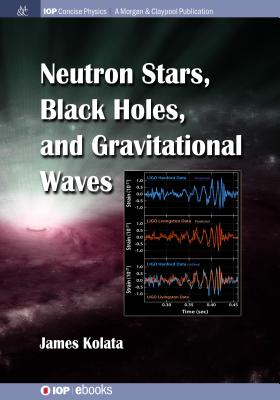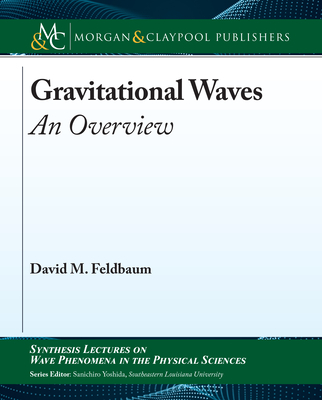Neutron Stars, Black Holes, and Gravitational Waves
暫譯: 中子星、黑洞與重力波
Kolata, James J.
- 出版商: Morgan & Claypool
- 出版日期: 2019-05-09
- 售價: $1,380
- 貴賓價: 9.5 折 $1,311
- 語言: 英文
- 頁數: 50
- 裝訂: Quality Paper - also called trade paper
- ISBN: 1643274198
- ISBN-13: 9781643274195
-
相關分類:
物理學 Physics
海外代購書籍(需單獨結帳)
相關主題
商品描述
Albert Einstein's General Theory of Relativity, published in 1915, made a remarkable prediction: gravitational radiation.
Just like light (electromagnetic radiation), gravity could travel through space as a wave and affect any objects it encounters by alternately compressing and expanding them. However, there was a problem. The force of gravity is around a trillion, trillion, trillion times weaker than electromagnetism so the calculated compressions and expansions were incredibly small, even for gravity waves resulting from a catastrophic astrophysical event such as a supernova explosion in our own galaxy. Discouraged by this result, physicists and astronomers didn't even try to detect these tiny, tiny effects for over 50 years. Then, in the late 1960s and early 1970s, two events occurred which started the hunt for gravity waves in earnest. The first was a report of direct detection of gravity waves thousands of times stronger than even the most optimistic calculation. Though ultimately proved wrong, this result started scientists thinking about what instrumentation might be necessary to detect these waves. The second was an actual, though indirect, detection of gravitational radiation due to the effects it had on the period of rotation of two 'neutron stars' orbiting each other. In this case, the observations were in exact accord with predictions from Einstein's theory, which confirmed that a direct search might ultimately be successful. Nevertheless, it took another 40 years of development of successively more sensitive detectors before the first real direct effects were observed in 2015, 100 years after gravitational waves were first predicted. This is the story of that hunt, and the insight it is producing into an array of topics in modern science, from the creation of the chemical elements to insights into the properties of gravity itself.
商品描述(中文翻譯)
阿爾伯特·愛因斯坦於1915年發表的廣義相對論做出了驚人的預測:引力輻射。
就像光(電磁輻射)一樣,引力也可以作為波在空間中傳播,並通過交替壓縮和擴展所遇到的物體來影響它們。然而,這裡有一個問題。引力的強度約為電磁力的十的三十次方倍的弱,因此計算出來的壓縮和擴展非常微小,即使是來自於我們銀河系內的超新星爆炸等災難性天文事件所產生的引力波。由於這一結果讓人沮喪,物理學家和天文學家在超過50年的時間裡甚至沒有嘗試去探測這些微小的效應。然後,在1960年代末和1970年代初,發生了兩個事件,開始了對引力波的認真搜尋。第一個是報告直接探測到的引力波,其強度比最樂觀的計算高出數千倍。雖然最終被證明是錯誤的,但這一結果讓科學家開始思考需要什麼樣的儀器來探測這些波。第二個是由於引力輻射對兩顆相互繞行的「中子星」旋轉週期的影響而進行的實際(雖然是間接的)探測。在這種情況下,觀測結果與愛因斯坦理論的預測完全一致,這確認了直接搜尋最終可能會成功。然而,直到2015年,即引力波首次被預測的100年後,經過40年的發展,才觀察到第一個真正的直接效應,這些探測器的靈敏度逐漸提高。這就是那次搜尋的故事,以及它對現代科學中一系列主題的洞察,從化學元素的形成到對引力本身特性的理解。













